Digital service delivery is a game-changer. Manufacturers are not just producing goods; but they are also engineering service-centric ecosystems powered by data, analytics, and cutting-edge technologies.
Consequently, a monumental shift is underway in industrial manufacturing—a shift that transcends products and ventures into the territory of services. This transformation is being propelled by the relentless wave of digitalisation. KPMG’s comprehensive report “The Future of Smart Industrials” illuminates the industry’s trajectory, with a focus on strategic imperatives and the signals of change that are steering the course of this evolution.
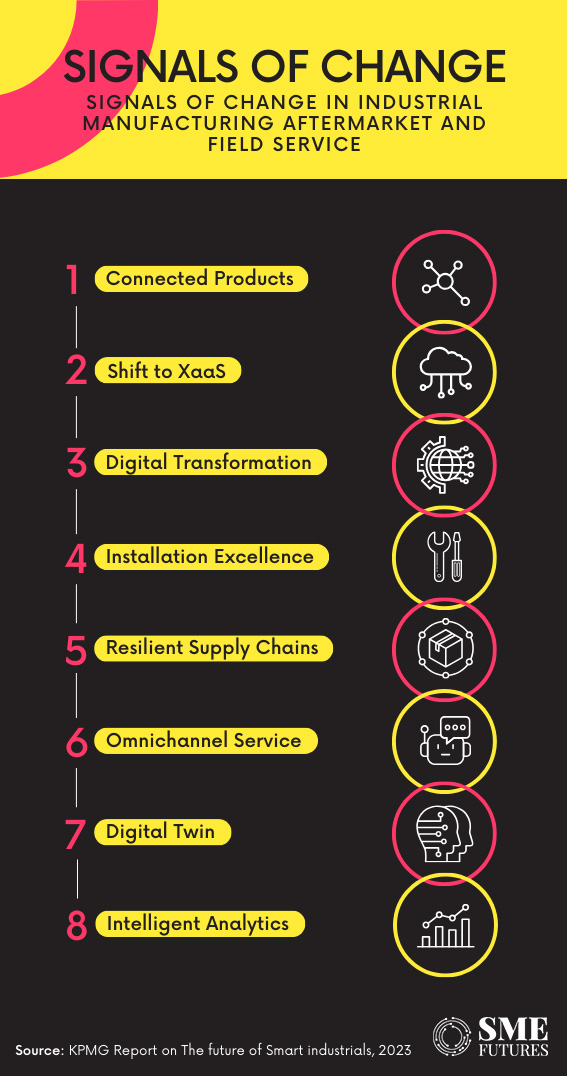
Embracing the digital metamorphosis
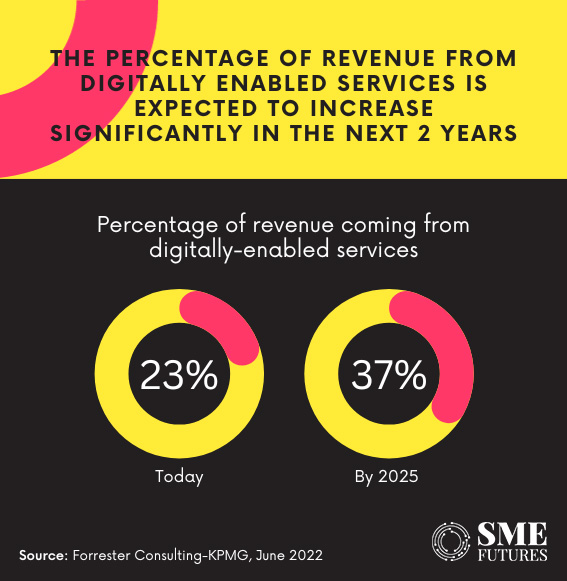
Industrial manufacturers are standing at the precipice of a digital revolution. Currently, an average of 58 per cent of their services are digitally enabled, a figure poised to ascend to a staggering 74 per cent by the year 2025. This paradigm shift is not merely cosmetic; it’s expected to account for a substantial 27 per cent of their total revenue—a leap from the current 13 per cent.
What is fuelling this transformation?
The promise of digital enablement is manifold: it can bolster sales by 44 per cent, fortify customer loyalty by 43 per cent, and furnish invaluable insights by 41 per cent.
The advantages of digitally enabled services
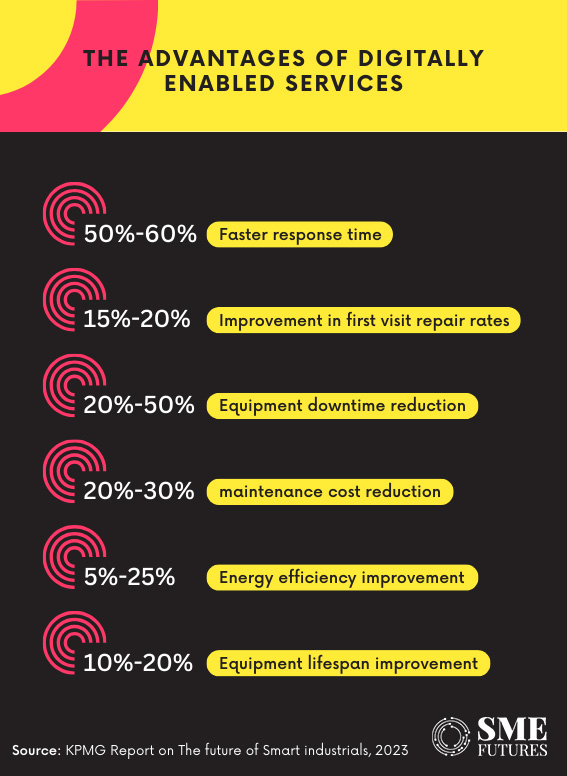
The advantages of digitally enabled services are both palpable and profound. Manufacturers can augment customer value, thereby unlocking new prospects of revenue and growth. By curtailing the cost of services and enhancing efficiency, they can judiciously tackle service-related issues through cost-effective channels, optimise the productivity of their technicians, and employ advanced tools like AR, VR, and MR—along with the brilliance of AI and ML. These improvements in efficiency result in lower prices for services and create opportunities for making more profit.
The evolution of business models
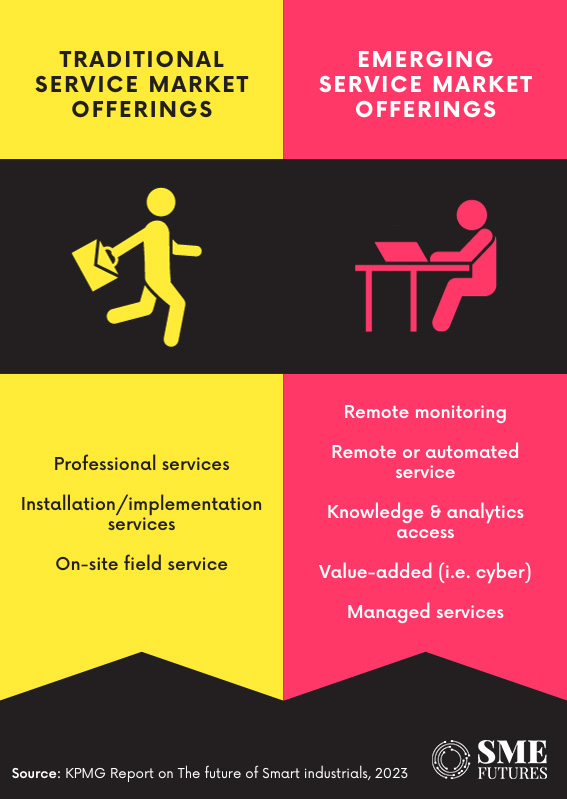
As the manufacturing industry traverses the digital arena, it is undergoing a multifaceted metamorphosis. Revenue models are transmuting from transactional sales to annual recurring revenue (ARR). This transition consists of subscription-based models, performance-based models (e.g., charging for equipment uptime), and outcome-based models (e.g., charging for achieved cost savings). Concurrently, market offerings are expanding to encompass autonomous equipment, AI-imbued precision operations, and a slew of integrated bundles spanning product, financing, field services, remote services, training, cybersecurity, and service parts sales.
Delivering a new service paradigm
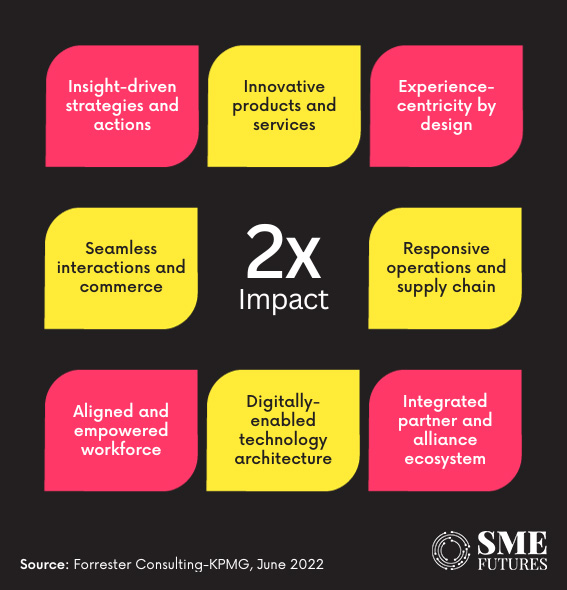
Delivery models are undergoing a radical transformation to meet the burgeoning expectations of customers in terms of service experience, efficiency, and efficacy. The traditional onsite field technician service delivery is increasingly being supplemented by self-service, remote support, and even autonomous equipment self-healing.
Manufacturers are optimising their remote service operations centres, call centres, and analytics centres of excellence to optimally support the shift towards remote and digital service delivery. A resounding 84 per cent of manufacturers reported either having already invested in or intending to invest in contact centre modernisation.
The capabilities that they want to acquire include improving field service performance, optimising customer experience across the entire service cycle, and proactively addressing customer service needs.
The blueprint of operating models
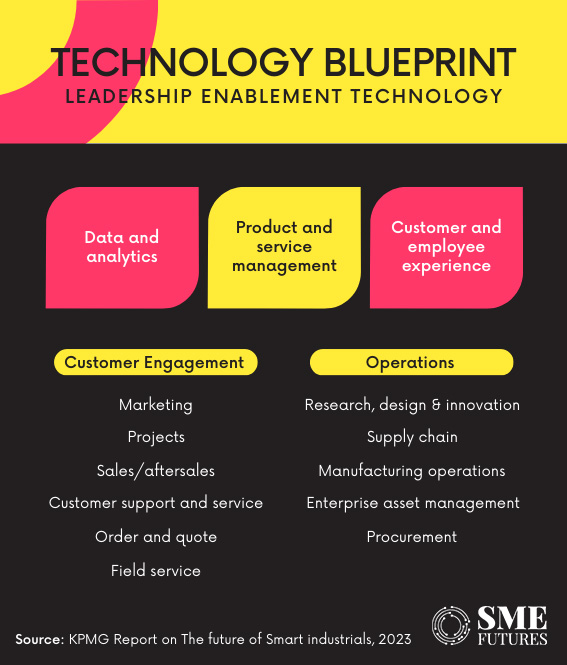
To deliver the desired customer experience, efficiency, and efficacy that are imperative for profitable growth in aftermarket and field services, manufacturers are proactively designing integrated target operating models. This target operating model spans six layers, incorporating functional processes, human resources, the service delivery model, technology, performance insights and data, and governance.
Navigating cost models
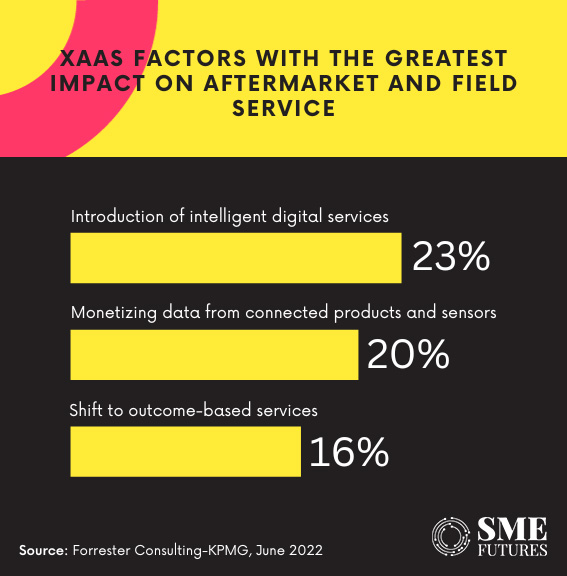
As manufacturers transition to as-a-service models, they must grapple with the prospect of incurring many upfront costs while revenue trickles in over the equipment’s lifetime. Achieving break-even in an as-a-service model might require three to four years or more, contingent on the offerings. Manufacturers need to recalibrate their expectations to operate effectively in this new paradigm by capitalising on the cost reduction opportunities presented by automation, customer self-service, more effective field technician enablement, and predictive maintenance.
Cultural metamorphosis and capability enhancement

For many manufacturers, the culture and capabilities that underpinned their historical successes do not align with the prerequisites for success in a digitally enabled service-driven business landscape. Competing metrics and incentives that pit traditional manufacturing business and legacy service models against the emerging digitally enabled service business are a point of friction. To bridge this divide, organisations are facilitating the adoption of digital tools by field service technicians and fostering a customer-centric culture that prioritises end-to-end customer experiences.
Privacy and security in the digital era
In an era where data is the lifeblood of manufacturing, the effective management and protection of information assumes paramount significance. Regulations like GDPR in Europe grant individuals authority over their personal data, obligating organisations to be accountable for their data practices. With the proliferation of connected products and platforms, the volume of generated and transmitted data is growing exponentially, amplifying the importance of data security. Manufacturers must permit selective access to equipment and data, ensuring robust security at both the equipment panels and the service portals. A comprehensive security strategy is imperative to mitigate the risks associated with intrusions and data breaches.
As industrial manufacturing embarks on its journey of digital transformation, the landscape is shifting beneath our feet. The road ahead is illuminated with the promise of revenue growth, operational efficiency, enhanced customer experiences, and fortified security. The ones who will embrace this digital revolution are poised to become the trailblazers of a smarter, more connected future, where services are the cornerstones of industrial manufacturing.











